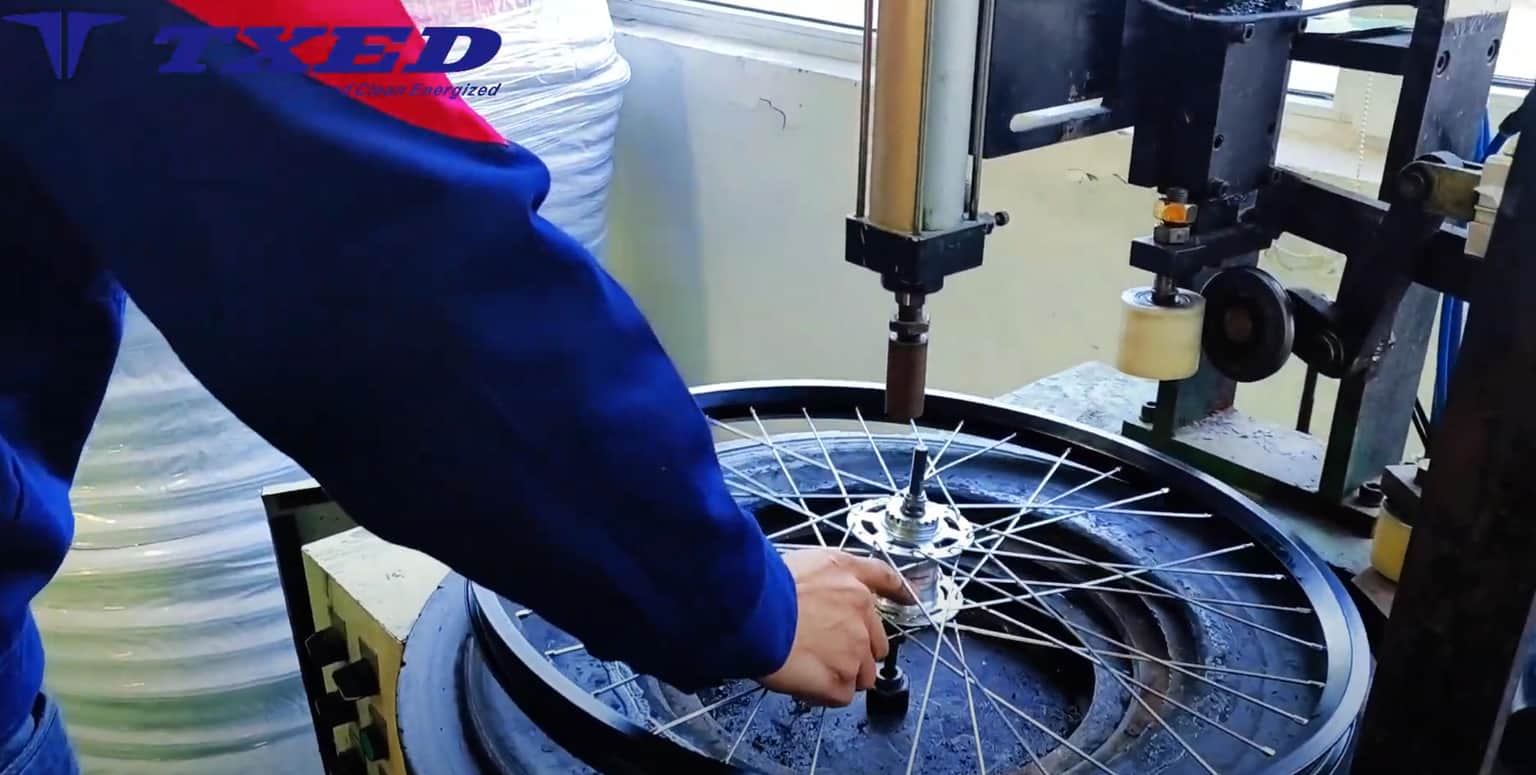How do we assemble spoke wheels for sharing bikes?

How Do We Assemble Spoke Wheels for Shared Bikes? (Step-by-Step Video Guide)
In this behind-the-scenes video, our factory team walks you through every stage of building a robust, high-performance spoke wheel designed specifically for shared-bike fleets. From precision lacing on the radial spoke machine to final tension checks on the automatic truing stand, you’ll see how we combine skilled craftsmanship with efficient tooling to deliver wheels that stand up to thousands of rides.
1. Sorting & Inspection of Components
We begin by quality-checking each rim, hub and spoke for straightness, proper flange drilling and dimensional accuracy. In the video you’ll see operators use calipers and go/no-go gauges to verify:
- Double-wall aluminum rims with reinforced braking surfaces
- Sealed-bearing hubs pre-lubricated and spun to measure bearing play
- Stainless steel spokes cut to exact lengths for front (186 mm) and rear (196 mm)
2. Automatic Spoke Lacing
Next, rims and hubs are loaded onto our radial-lacing machine. As shown at 1:15 of the video, the machine:
- Indexes the hub on its mandrel
- Feeds each spoke and threads the nipple into the rim hole
- Maintains our signature 3-cross pattern to balance strength and flexibility
This automated step cuts lacing time down to under three minutes per wheel, while ensuring consistent spoke entry angles and crossings.
3. Pre-Tension & Seating Run
After lacing, every wheel goes on a semi-automatic tensioner (around 3:45 in the video). Technicians:
- Rotate the rim to seat spokes an nipples
- Apply an initial 4–6 Nm of torque uniformly using a digital spoke wrench
- Listen for even “ping” sounds as spokes settle into place
4. Precision Truing & Tension Balancing
For the most accurate results, wheels are transferred to our CNC-controlled truing stand (see 5:10). The system:
- Scans lateral and radial deviations with laser sensors
- Automatically adjusts spoke tension via motorized nipples
- Targets ±0.3 mm lateral runout and ±0.5 mm radial runout
Final spoke tension is verified with a digital tension meter: front wheels at 110–130 kgf, rear at 130–150 kgf.
“Precision truing is key—uneven tension not only leads to wobble but dramatically increases spoke fatigue over time.”
5. Dishing & Final Quality Control
In the last step, each wheel is dished on our dual-arm gauge to ensure perfect centering in the frame. We then perform a 60-second spin and visual check under LED lights, looking for any:
- Wobbles or hops
- Loose spokes or misaligned nipples
- Nibble marks or burrs on the rim edge
Only wheels that pass this full inspection receive our “Fleet-Ready” stamp and move on to final assembly.
Why Our Process Matters
Shared-bike wheels endure high usage, frequent docking impacts and diverse weather. By combining automated lacing, digital tension control and laser-guided truing, we deliver wheels that:
- Maintain true alignment over thousands of kilometers
- Reduce spoke breakage rates by 30% compared to manual builds
- Ensure consistent ride feel and safety for every user
Interested in touring our factory or integrating this workflow into your own OEM project? Get in touch with our engineering team today.
